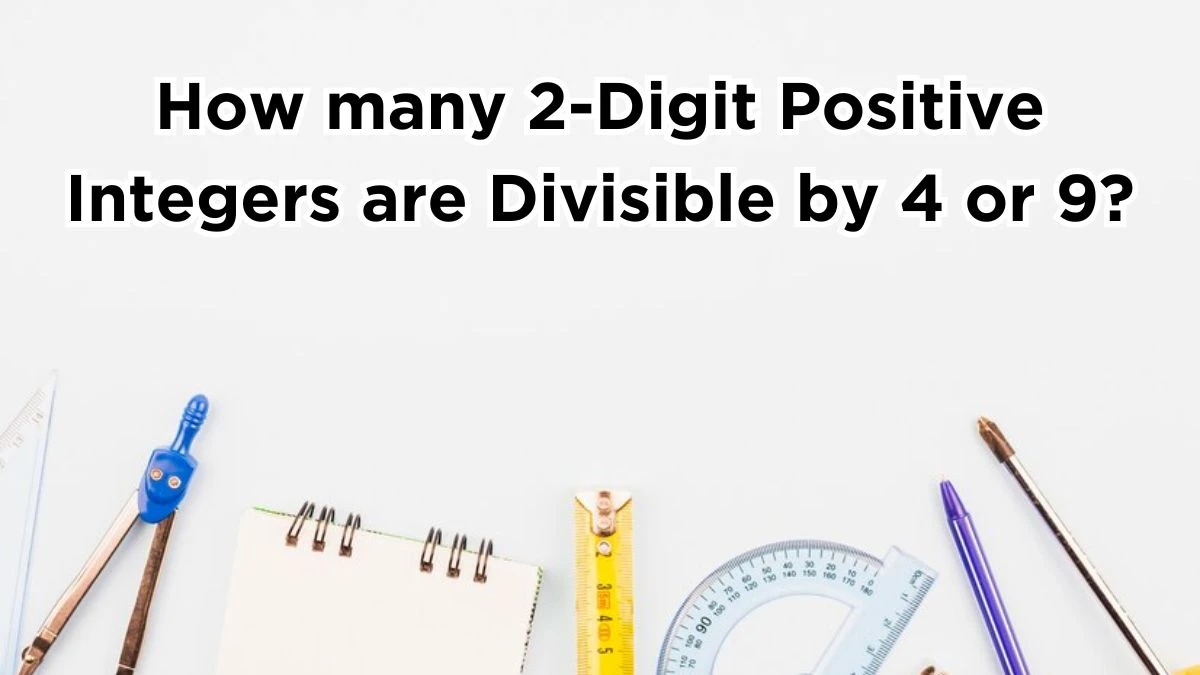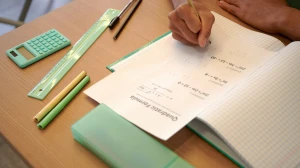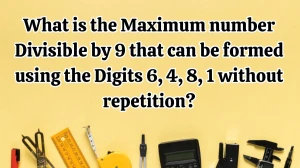How many 2-Digit Positive Integers are Divisible by 4 or 9?
by
Updated Jul 26, 2024

How many 2-Digit Positive Integers are Divisible by 4 or 9?
To determine how many two-digit positive integers are divisible by 4 or 9, follow these steps
Two-Digit Numbers Divisible by 4:
Identify the series of two-digit numbers divisible by 4: 12, 16, 20, ..., 96.
Use the formula for the nth term of an arithmetic sequence
an = a1 + (n - 1) x d
where a1 = 12, d = 4, and an = 96
96 = 12 + (n−1) x 4
84 = (n−1) x 4
n − 1 = 21
n = 22
Thus, there are 22 two-digit numbers divisible by 4.
Two-Digit Numbers Divisible by 9:
Identify the series of two-digit numbers divisible by 9: 18, 27, 36, ..., 99.
Use the formula for the nth term of an arithmetic sequence
an = a1 + (n - 1) x d
where a1 = 18, d = 9, and an = 99
99 = 18 + (n−1) x 9
81 = (n−1) x 9
n = 10
Thus, there are 10 two-digit numbers divisible by 9.
Two-Digit Numbers Divisible by Both 4 and 9:
Numbers divisible by both 4 and 9 are also divisible by their Least Common Multiple (LCM), which is 36.
Identify the series of two-digit numbers divisible by 36: 36, 72.
Use the formula for the nth term of an arithmetic sequence
an = a1 + (n - 1) x d
where a1 = 36, d = 36, and an = 72
72 = 36 + (n−1) x 36
36 = (n−1) x 36
n = 2
Thus, there are 2 two-digit numbers divisible by both 4 and 9.
Total = 22 + 10 − 2
Total = 30
Therefore, there are 30 two-digit positive integers divisible by either 4 or 9.
Finding Numbers Divisible by Specific Values
In mathematics, problems involving finding numbers that meet certain divisibility criteria often require the use of arithmetic sequences and the principle of inclusion-exclusion.
Identifying Divisible Numbers:
To find numbers within a specific range that are divisible by a given integer, such as 4 or 9, we first identify the sequence of numbers that meet the divisibility requirement. For example, for divisibility by 4, we list all numbers like 12, 16, 20, and so on, up to the largest number within the range.
Using Arithmetic Sequences:
These numbers form an arithmetic sequence where each number is obtained by adding a constant difference to the previous number. In this case, the constant difference is the divisor itself (e.g., 4 for numbers divisible by 4). We use the formula for the nth term of an arithmetic sequence to find how many such numbers exist in the range.
Calculating Overlaps:
When a number needs to meet multiple divisibility criteria (such as being divisible by both 4 and 9), it is crucial to find the numbers that satisfy both conditions. This involves calculating the Least Common Multiple (LCM) of the divisors. For instance, to find numbers divisible by both 4 and 9, we determine the LCM of 4 and 9, which is 36.
Applying Inclusion-Exclusion Principle:
To avoid counting numbers that fit multiple criteria more than once, we use the principle of inclusion-exclusion. This principle helps in combining the counts of numbers divisible by each criterion and then subtracting those counted more than once (i.e., divisible by the LCM).




